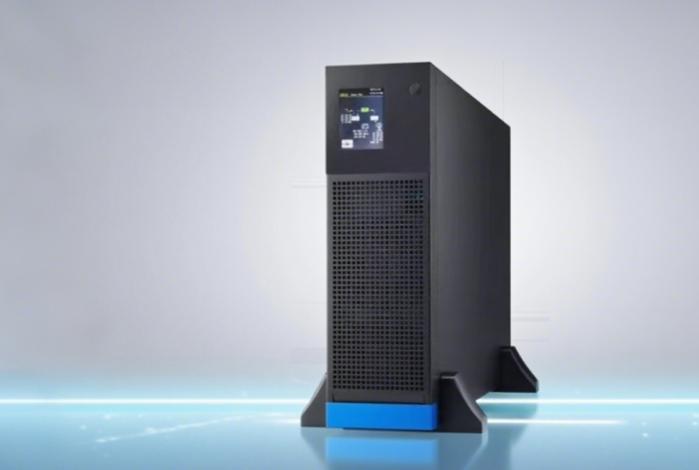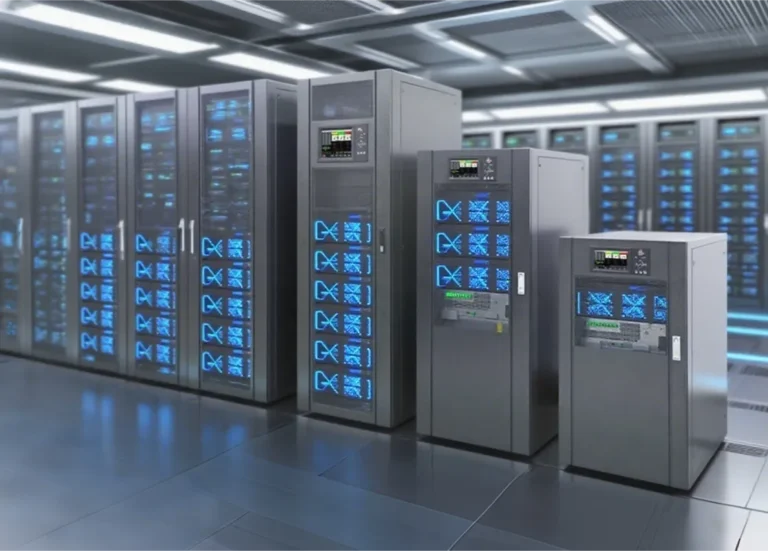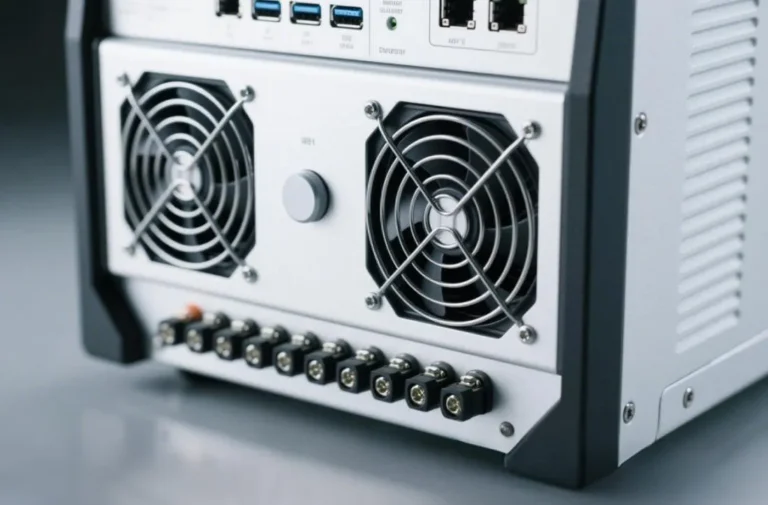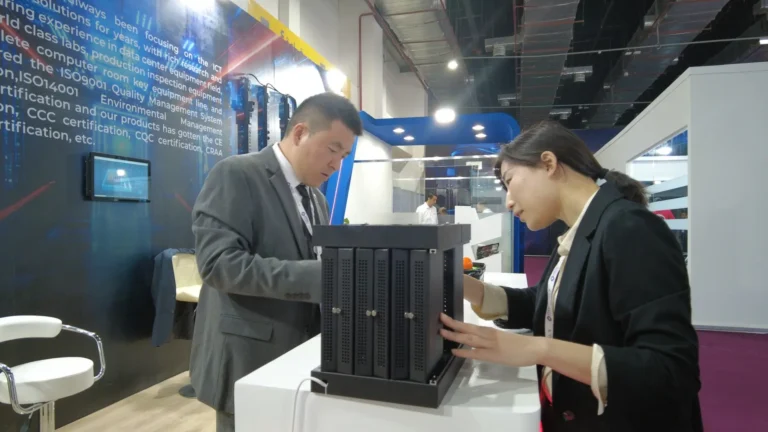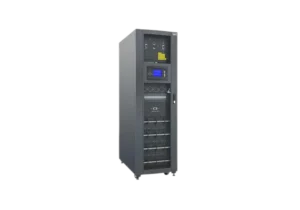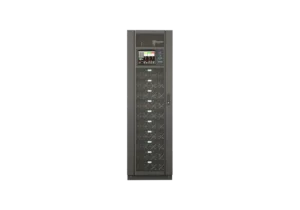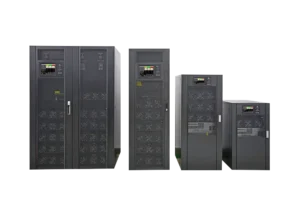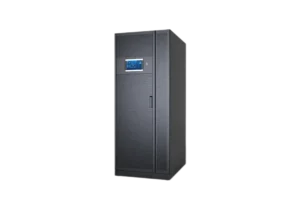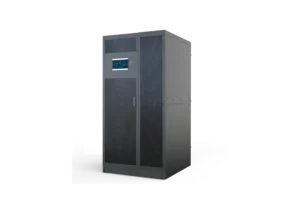As we all know, even a brief interruption in power supply can lead to costly downtime, disrupted operations, or even data loss. For small and medium-sized businesses (SMBs), an uninterruptible power supply (UPS) system is a critical investment to ensure business continuity and protect against such risks.
But how do you go about selecting the right UPS system for your SMB? This article will guide you step-by-step, addressing the key factors you need to consider, so you can make an informed decision.
What is a UPS System and Why Do SMBs Need One?
A UPS (Uninterruptible Power Supply) is a device that provides backup power during electrical outages or fluctuations in voltage. Unlike a standard surge protector, a UPS not only shields connected equipment from harmful voltage spikes but also ensures the continuity of power, giving you the time to safely save data, shut down systems, or transition to backup power sources like generators.
For SMBs, where every moment counts, a UPS system is essential for:
- Preventing downtime in retail, manufacturing, and offices.
- Protecting sensitive equipment such as servers, POS systems, and communications tools.
- Assuring data safety by providing time to save work and shut down properly.
- Identifying and managing frequent power fluctuations that can damage hardware over time.
Step-by-Step Guide to Choosing the Right UPS System for Your SMB
1. Assess Your SMB’s Power Requirements
The first step is understanding the total load your UPS needs to support. Power requirements are typically measured in watts or volt-amps (VA), and most UPS units are rated by their VA capacity. Here’s what you need to do:
- Make a list of critical devices that need power during an outage. Typical equipment includes servers, computers, network routers, telephony systems, and sometimes specialized machinery.
- Add the power load of each device (this information is usually available on the device’s power label). For instance:
- Desktop computers: 300-500W
- Network routers: 25-100W
- Servers: 500-1000W (varies by model)
- Calculate the total load and add 20-25% for future growth, safety margins, and unanticipated demands.
Pro Tip
Use online tools or consult your IT team to accurately calculate your power needs.
2. Determine the Runtime Required
How long do you need your UPS to keep your systems running during an outage? SMBs usually prioritize short-term power continuity to save data, complete essential tasks, or activate backup generators. Consider:
- Long runtimes (upwards of 30 minutes) for mission-critical systems such as servers and databases.
- Shorter runtimes (5-15 minutes) for workstations, phones, and non-essential devices.
Run-Time Optimization
Not every piece of equipment needs to run off the UPS. Power-saving strategies such as prioritizing critical systems while excluding low-priority devices can significantly reduce costs. Many UPS systems also allow load segmentation, letting you selectively shut down less critical devices in the event of an extended outage.
3. Select the Right UPS Type
UPS systems come in three main types. The type you choose depends on your business’s sensitivity to power disturbances and your budget:
Offline/Standby UPS
- Provides basic battery backup and limited surge protection.
- Suitable for SMBs with minimal power needs such as protecting desktop computers and small equipment.
- Affordable, but may not protect against voltage fluctuations.
Line-Interactive UPS
- Regulates voltage fluctuations (low-voltage dips or surges) without needing to use the battery, prolonging battery life.
- Ideal for SMBs in areas with frequent brownouts or power instability.
- A cost-effective choice for office setups, small servers, and retail businesses.
Online or Double Conversion UPS
- Continuously powers connected equipment from the battery, ensuring zero transfer time during outages or power fluctuations.
- Provides the highest level of protection for sensitive IT equipment, such as servers and data centers.
- Best suited for SMBs with critical systems or in industries where downtime is unacceptable.
4. Understand Key Features You Need
A wide range of UPS systems exists, so understanding which features align with your SMB’s needs is essential. Look for UPS systems with the following critical features:
- Automatic Voltage Regulation (AVR): Protects equipment during brownouts or overvoltages by stabilizing power without using the battery.
- Surge Protection: Shields connected devices from power spikes.
- Hot-Swappable Batteries: Enables you to replace batteries without causing downtime.
- Scalability: Allows you to add more battery modules as power needs increase.
- Management Options: Many modern UPS systems include monitoring and management software for tracking battery health and runtime. Some even feature remote monitoring over a network.
- Form Factor: Choose between rack-mounted and tower UPS systems based on your space and installation needs.
5. Consider Scalability
Your SMB may grow over time, requiring additional equipment, workstations, or servers. To future-proof your investment:
- Choose a UPS with higher capacity than your current load.
- Look for systems with modular batteries or expandable options to prolong runtime as your needs increase.
6. Budget and Energy Efficiency
Understanding how much you’re willing to spend can help you narrow down options. However, it’s essential to balance cost with reliability and performance:
- Standard UPS systems (Offline/Line-Interactive): Typically $50-$500, suited for workstations and low-to-moderate needs.
- Higher-capacity models (Online/Double Conversion): $1,000+ for server rooms and mission-critical systems.
Energy-efficient UPS systems with eco-modes or low standby power consumption can save money over the long term. While they may have a slightly higher upfront cost, they’ll cut down operating expenses.
7. Choose a Reliable UPS Suppliers
SMBs should invest in trusted brands known for reliability, support, and warranties. Leading UPS manufacturers provide the most durable systems and excellent customer service. These include:
- APC by Schneider Electric: Renowned for its Smart-UPS product line.
- CyberPower: Offers feature-rich but budget-friendly options for SMBs.
- Eaton: Known for scalability and energy-efficient designs.
- Vertiv (Liebert): Strong in critical power protection for server rooms and data centers.
8. Plan for Maintenance
- UPS batteries have a finite lifespan (typically 3-5 years). Select a UPS with hot-swappable battery modules for minimal downtime during replacements.
- Regularly monitor your UPS performance using built-in diagnostic tools or accompanying software.
Conclusion
Choosing the right UPS system for your SMB is a crucial step in securing business continuity and protecting your sensitive equipment. By understanding your power requirements, runtime needs, equipment sensitivity, and budget constraints, you can select a UPS system that provides maximum protection and flexibility.
Investing in a reliable UPS system ensures your SMB stays operational regardless of power outages or fluctuations—so you never have to worry about downtime again. If you’re still unsure, consulting a UPS provider or IT specialist can help tailor a system that fits your exact business needs.
Need help finding the right UPS system for your SMB? Contact us today, and we’ll help you make the best decision!

